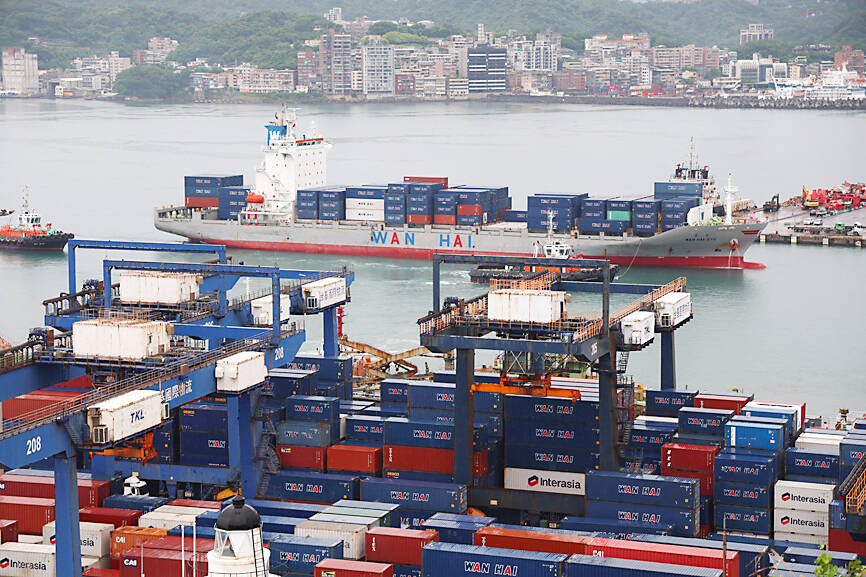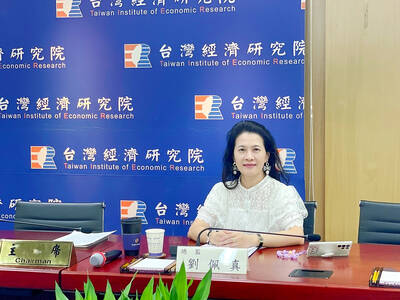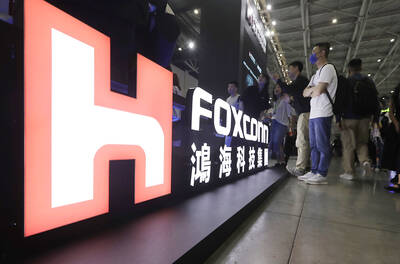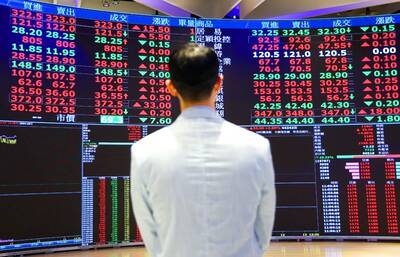Export orders expanded 24.6 percent year-on-year last month to US$56.77 billion, driven by robust demand for artificial intelligence (AI) and high-performance computing applications, the Ministry of Economic Affairs said yesterday.
Last month’s figure — the fifth straight month of double-digit percentage growth and the second-highest for June — exceeded the ministry’s estimate of US$53 billion to US$55 billion.
It brought second-quarter orders to US$171.1 billion, up 20.9 percent year-on-year, the ministry said.

Photo: CNA
In the first half of the year, export orders grew 16.6 percent year-on-year to US$320.57 billion, exceeding the ministry’s guidance of US$316.8 billion to US$318.8 billion.
While orders last month decreased 2 percent from May, as front-loading effects eased across all industries, particularly in traditional sectors, strong AI-related demand is expected to persist in the second half as server makers launch new products, which would help sustain order momentum, Department of Statistics Director-General Huang Wei-jie (黃偉傑) told a news conference in Taipei.
Order growth in the second half might slow from the first half, but it would still increase on an annual basis, Huang said, adding that the result would depends on how US tariff policies pan out.
Export orders this month are expected to decline month-on-month by 1.4 to 4.9 percent to US$54 billion to US$56 billion, the ministry said.
On an annual basis, orders are forecast to increase by 7.9 to 11.9 percent, it said.
The stronger-than-expected growth last month was mainly driven by orders for electronic components and information and communications technology (ICT) products, it said.
Export orders for electronic components increased 35 percent year-on-year last month, while orders for ICT products grew 37.4 percent and those for optoelectronic products gained 6.7 percent, ministry data showed.
Growth in ICT products was lifted by end-of-quarter front-loading of notebook computers, while similar effects for smartphones and other consumer electronics might emerge late this month or early next month, Huang said.
If tariffs do not affect the economy in the second half and consumer spending rebounds, shipments of consumer electronics should be unaffected, he said.
Traditional industries remained conservative due to weak market demand and oversupply from foreign peers, Huang said.
Export orders for plastic and rubber products fell 11.4 percent year-on-year last month, while orders for base metals dropped 10.2 percent and those for chemical products fell 8.7 percent as oversupply from China weighed on the three product categories, he said.
Export orders for machinery products rose 10.6 percent year-on-year last month, driven by demand for semiconductor manufacturing equipment, he added.

A proposed 100 percent tariff on chip imports announced by US President Donald Trump could shift more of Taiwan’s semiconductor production overseas, a Taiwan Institute of Economic Research (TIER) researcher said yesterday. Trump’s tariff policy will accelerate the global semiconductor industry’s pace to establish roots in the US, leading to higher supply chain costs and ultimately raising prices of consumer electronics and creating uncertainty for future market demand, Arisa Liu (劉佩真) at the institute’s Taiwan Industry Economics Database said in a telephone interview. Trump’s move signals his intention to "restore the glory of the US semiconductor industry," Liu noted, saying that

On Ireland’s blustery western seaboard, researchers are gleefully flying giant kites — not for fun, but in the hope of generating renewable electricity and sparking a “revolution” in wind energy. “We use a kite to capture the wind and a generator at the bottom of it that captures the power,” said Padraic Doherty of Kitepower, the Dutch firm behind the venture. At its test site in operation since September 2023 near the small town of Bangor Erris, the team transports the vast 60-square-meter kite from a hangar across the lunar-like bogland to a generator. The kite is then attached by a

Foxconn Technology Co (鴻準精密), a metal casing supplier owned by Hon Hai Precision Industry Co (鴻海精密), yesterday announced plans to invest US$1 billion in the US over the next decade as part of its business transformation strategy. The Apple Inc supplier said in a statement that its board approved the investment on Thursday, as part of a transformation strategy focused on precision mold development, smart manufacturing, robotics and advanced automation. The strategy would have a strong emphasis on artificial intelligence (AI), the company added. The company said it aims to build a flexible, intelligent production ecosystem to boost competitiveness and sustainability. Foxconn

STILL UNCLEAR: Several aspects of the policy still need to be clarified, such as whether the exemptions would expand to related products, PwC Taiwan warned The TAIEX surged yesterday, led by gains in Taiwan Semiconductor Manufacturing Co (TSMC, 台積電), after US President Donald Trump announced a sweeping 100 percent tariff on imported semiconductors — while exempting companies operating or building plants in the US, which includes TSMC. The benchmark index jumped 556.41 points, or 2.37 percent, to close at 24,003.77, breaching the 24,000-point level and hitting its highest close this year, Taiwan Stock Exchange (TWSE) data showed. TSMC rose NT$55, or 4.89 percent, to close at a record NT$1,180, as the company is already investing heavily in a multibillion-dollar plant in Arizona that led investors to assume